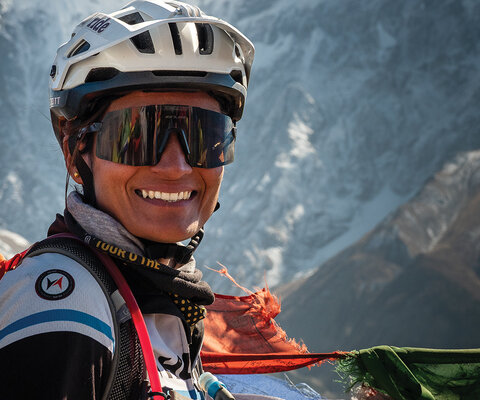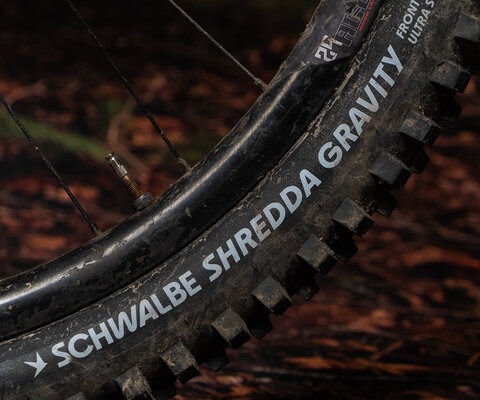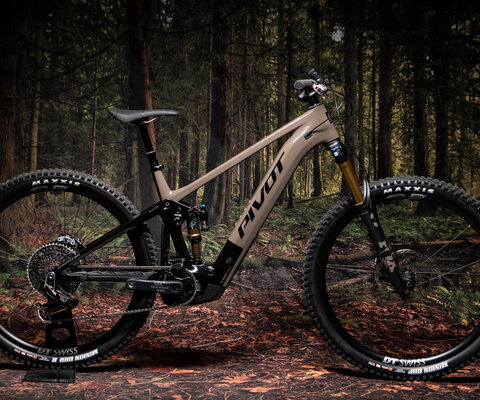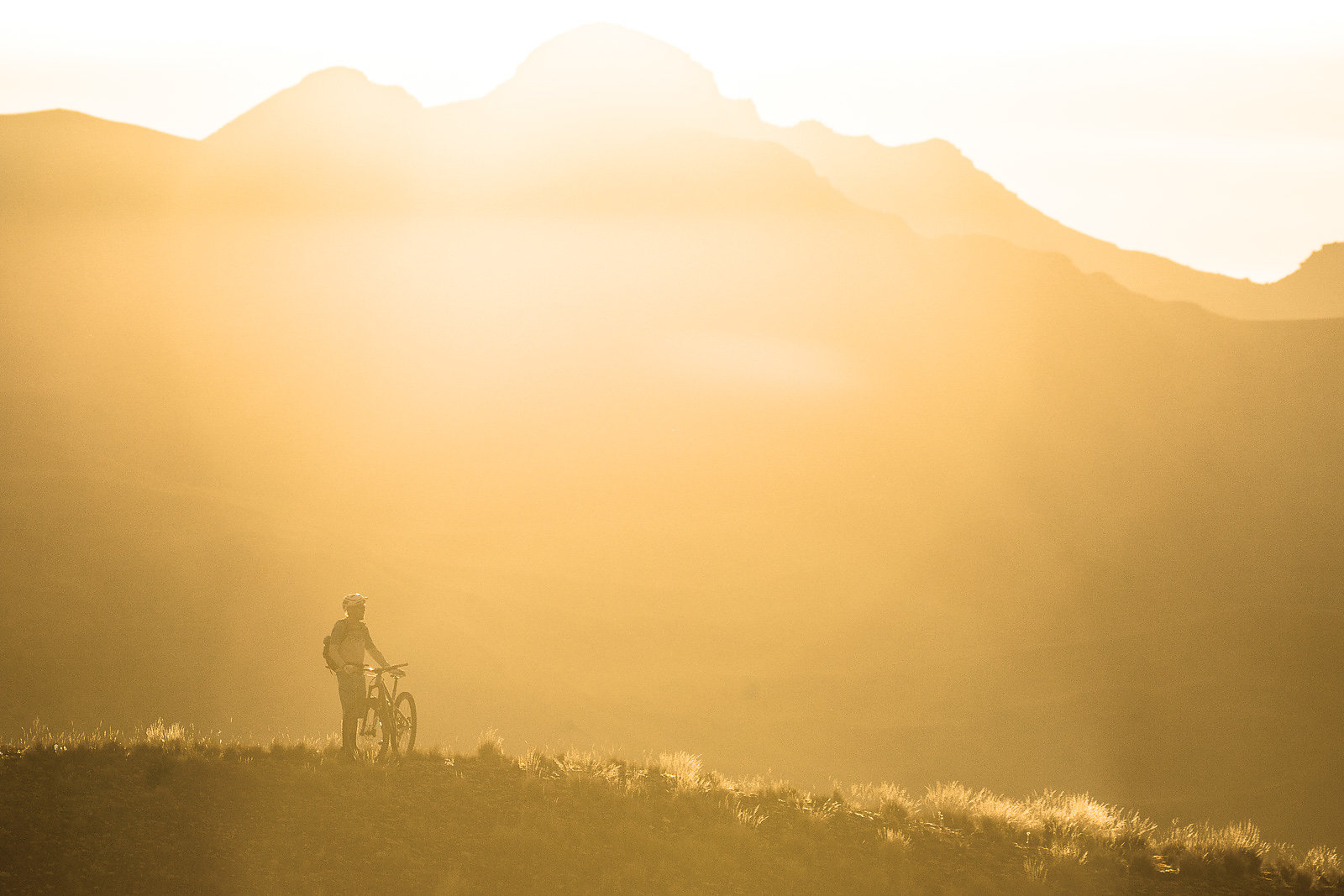
Hunger Pains Suffering and Survival in Bolivia's Cordillera Real
Words by Thomas Woodson | Photos by Joey Schusler
The drops on my top tube aren’t sweat. They are tears of exhaustion.
My friends are tiny specks, far ahead, and I struggle to find the motivation to take another step toward the mountain pass in the distance. It’s too much. I dump my bike to the side, rip off my pack and bury my head between my knees. This is not the type of weakness I want to be showing on day two of a nine-day bikepacking traverse in the Bolivian Andes.
I have never wanted to quit anything so badly in my life.
And yet, over the days ahead, the struggle somehow seems to vanish from memory each night as I cram into my tent. Maybe it’s just the way of such adventures, or maybe it’s that everyone else seems relatively unfazed by the insanity of attempting to link 100 miles of llama trails, all 15,000 feet above sea level.
At this moment, however, I am fully aware this is the most difficult thing I’ve ever attempted.
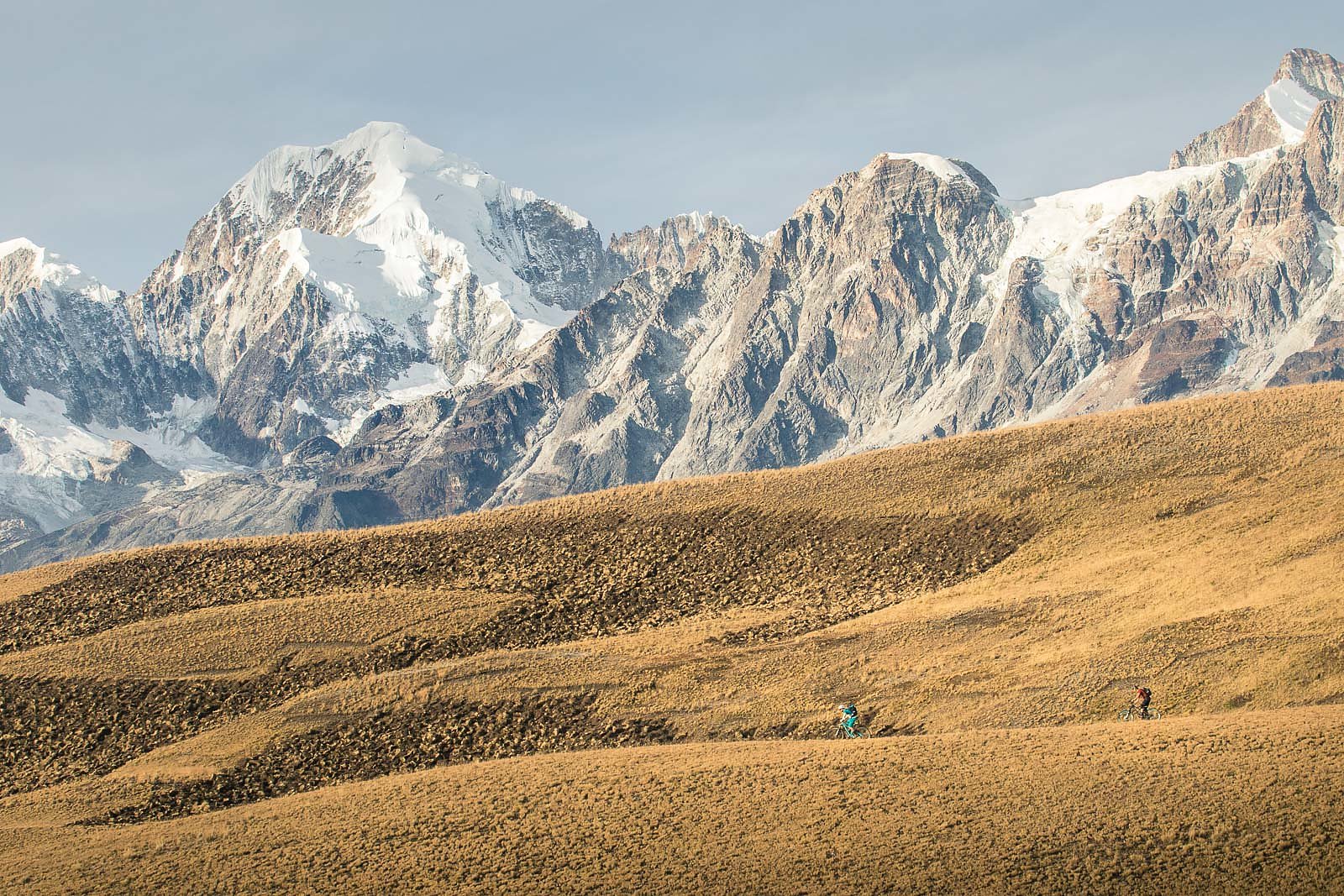
The pass ahead is just one of many in the Cordillera Real Mountains, a densely glaciated range stretching 77 miles and filled with more than 100 peaks higher than 17,000 feet. Our plan is to traverse the range in nine days, along a high-alpine route perched above all villages, farms and signs of civilization in general.
It’s the sort of mission that pushes the edge of what is possible, fueled by a desire to be deep off the beaten path. Sitting with my head down, gasping for breath, I realize it’s also the sort of mission where success is a bonus. The true goal is being this far off the map with bikes between our legs.
Back on the pass, I breathe deep and gather my thoughts. The way ahead is long and I have no option but to go on. I shrug on my pack, pick up my bike and continue upward.
Three days ago, when we flew into Bolivia’s capital of La Paz, I was blissfully unaware of the suffering to come. There were hints, however: The city itself is perched at nearly 12,000 feet, and as we loaded the bikes for the drive north, I found myself slightly out of breath. Not a problem, I figured. I had trained for this. I’d be fine.
The northern section of Cordillera Real had only opened to the public a few years before, and a local guide assured us that our crew—consisting of Joey Schusler, Nate Hills, Carston Oliver and myself—would be alone for most our journey. A week later we would reach a more traveled region in the south of the range, where we would summit the 17,500-foot Pico Austria, the high point of our journey. By the eighth day, we would be descending east into the rainforest and back toward the relative luxury of La Paz and civilization.
That was the plan.
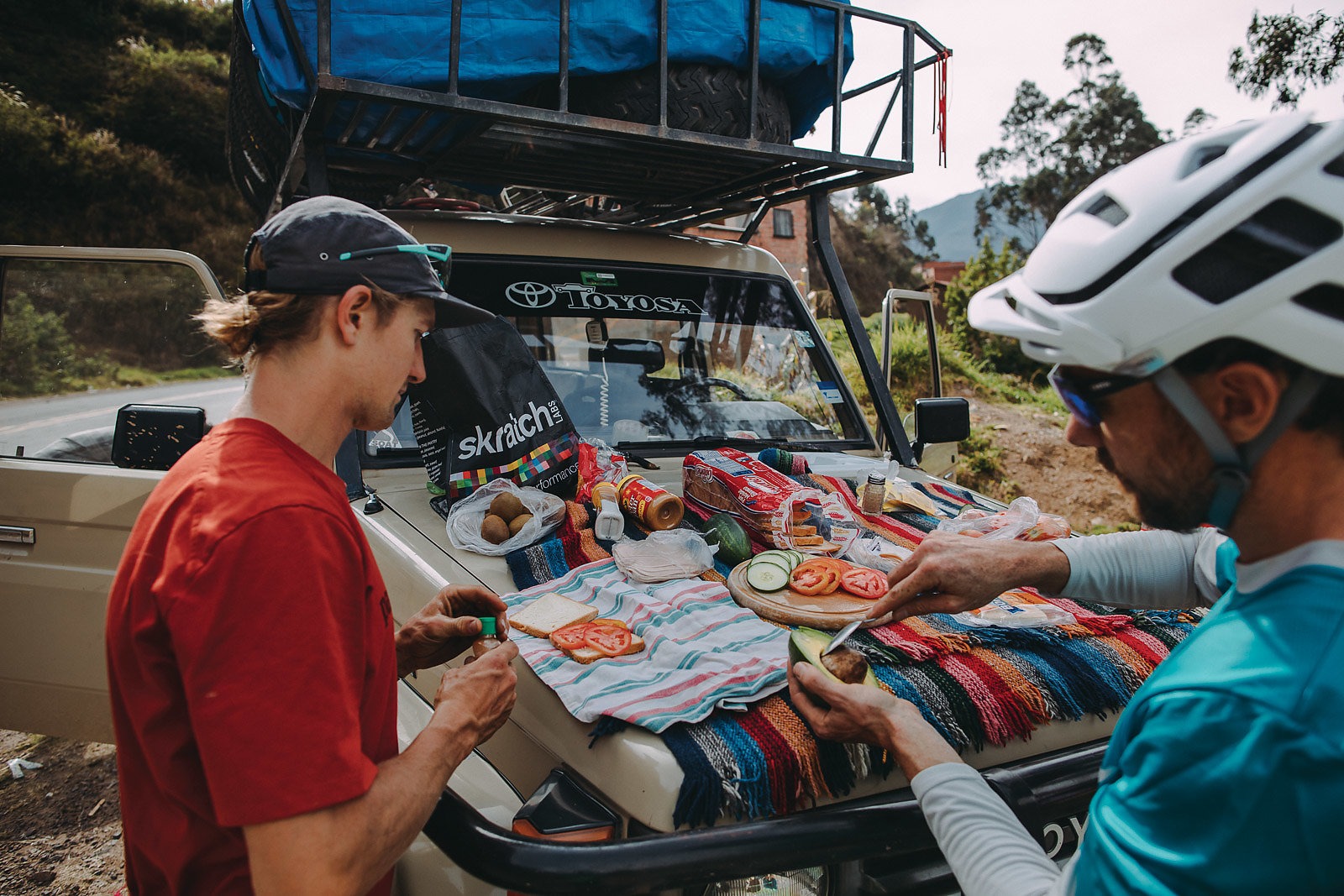
Things started to unravel early, as we marched up two scree-covered passes the first day, then two more the next. The second was where I collapsed and struggled onward. When I eventually reached the top of the pass, I thought it might be over. It wasn’t.
Back at the summit, at more than 16,500 feet, we begin to search for faint tracks down to the next valley. We do the same at the next, and the one after that. We hear no other sounds aside from our wind-sucking exhaustion and the fine, rocky dirt that batters our carbon wheels like broken porcelain—a satisfying noise after several thousand feet of ascending. Besides these gravity-powered moments, we hardly talk, strung along the climbs like a sad train of ants. Standing in the thin, calm air, huge peaks tearing at the sky around us, we daydream about perfect tent sites in the valley below. If we are lucky, dinner will come before things get too dark.
Each evening brings a joyful end to the ridiculousness of the day. We talk about the vibrant juice market in La Paz, or the 3,000-foot urban descent back to our hostel. Things become fanciful; we pine about how wonderful it would be to have Manchito, our shuttle driver, drive us up the next pass to find us the best trails. At the bottom of each shuttle, Manchito always had an array of avocados, tomatoes, cucumbers, bread and cheese laid out across the hood of his Land Cruiser, and we imagine each time we conquer another endless scree ascent that it earns us another sandwich built from this wondrous spread.
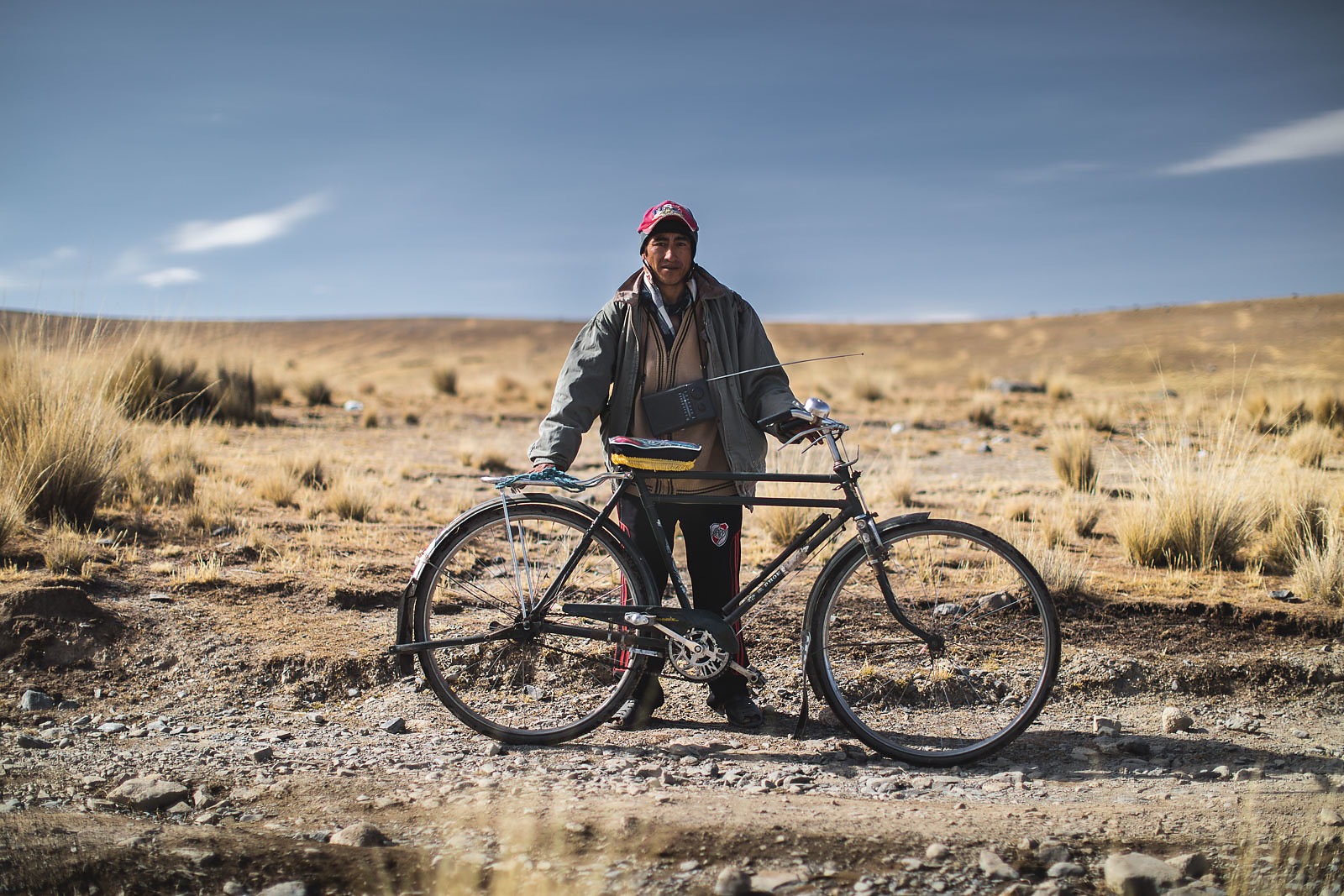
It is at the end of the third day, following the realization we have barely ridden our bicycles for at least 36 hours despite climbing a gamut of mountain passes, that we decide to pull the plug. At our current pace, it will be impossible to reach our pickup point on time—usually a bikepacker can double the pace of a hiker in rugged terrain, but this place has redefined “rugged.” We are moving at the same speed as the only trekking trip report we found online. Nearly halfway through our allotted time, we are barely to our emergency pullout point that will lead us on a two-day descent back to La Paz.
Relieved of the burden of the traverse ahead, the constantly improving singletrack winding into the valley below is nearly euphoric. We spill out onto a dirt road, pedaling through small villages of llama herders. Our broken Spanish is enough for friendly conversation with the locals, who are impressed by our ambitious—if unsuccessful—route attempt, and equally excited to show us their homes.
One particularly keen villager is a woman our age, a shepherd who has spent her entire life in the valley. Most of her time is spent alone in the hills with her llamas, moving them from the stone walls of her home each morning into the mountains to graze. Each evening, she and her herd return to the village, repeating an endless and timeless ritual.
It also turns out we aren’t the only bikers in the area. A man follows us down a few of the trails, speeding along on a vintage cruiser complete with a curved, stainless steel frame, sweeping handlebars, and intricate mud flaps over the narrow tires. The love for mountains and bicycles is truly universal.
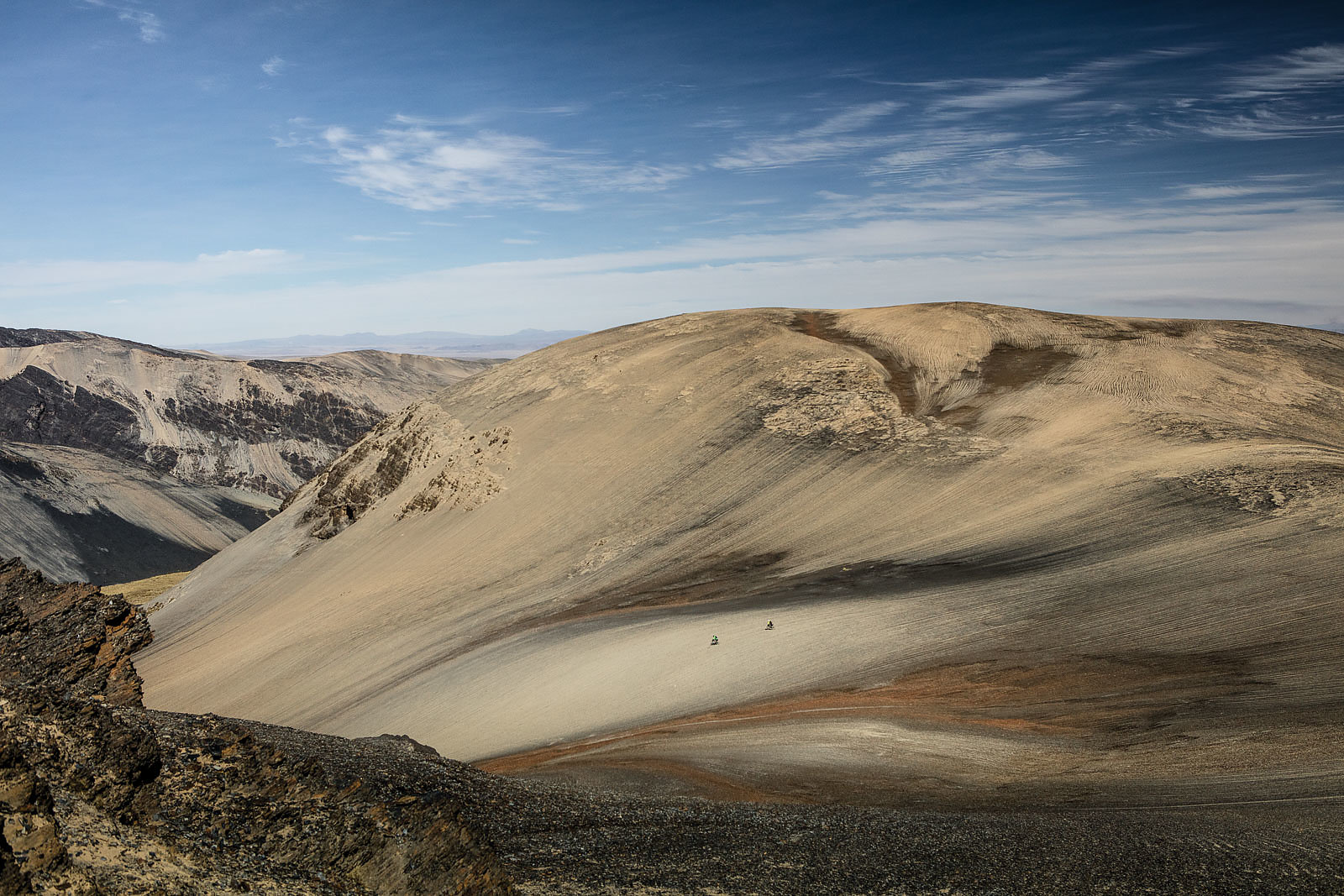
The next morning, we continue our gravel descent, past the flanks of huge glaciated peaks, and into verdant farmlands. Every hour or so we give our maps a brusque glance, enough to fix our general direction but not enough to remove the adventure factor. The fast dirt roads parallel the Cordillera Real, and we cover more miles in a few hours than we did in three days on llama paths.
Rounding a long bend in the road, we find ourselves forced east—the wrong direction, if we are to get to La Paz. By the time the road’s descent mellows, we are headed directly into the giant mountains again, with no other options. I slump in my saddle, my hopes of rest and recovery in La Paz shattered.
Still, after a look at the math and some quick mental cartography, Carston figures out a plan that will allow us to reach our pickup in four days without dying of exhaustion—and summit Pico Austria, if we’re feeling up to the challenge. Despite my lack of personal confidence, I go along with the rest of the group. We have to finish what we started. All we have to do is struggle up one pass each day—no big deal, right? I mean, what could go wrong?
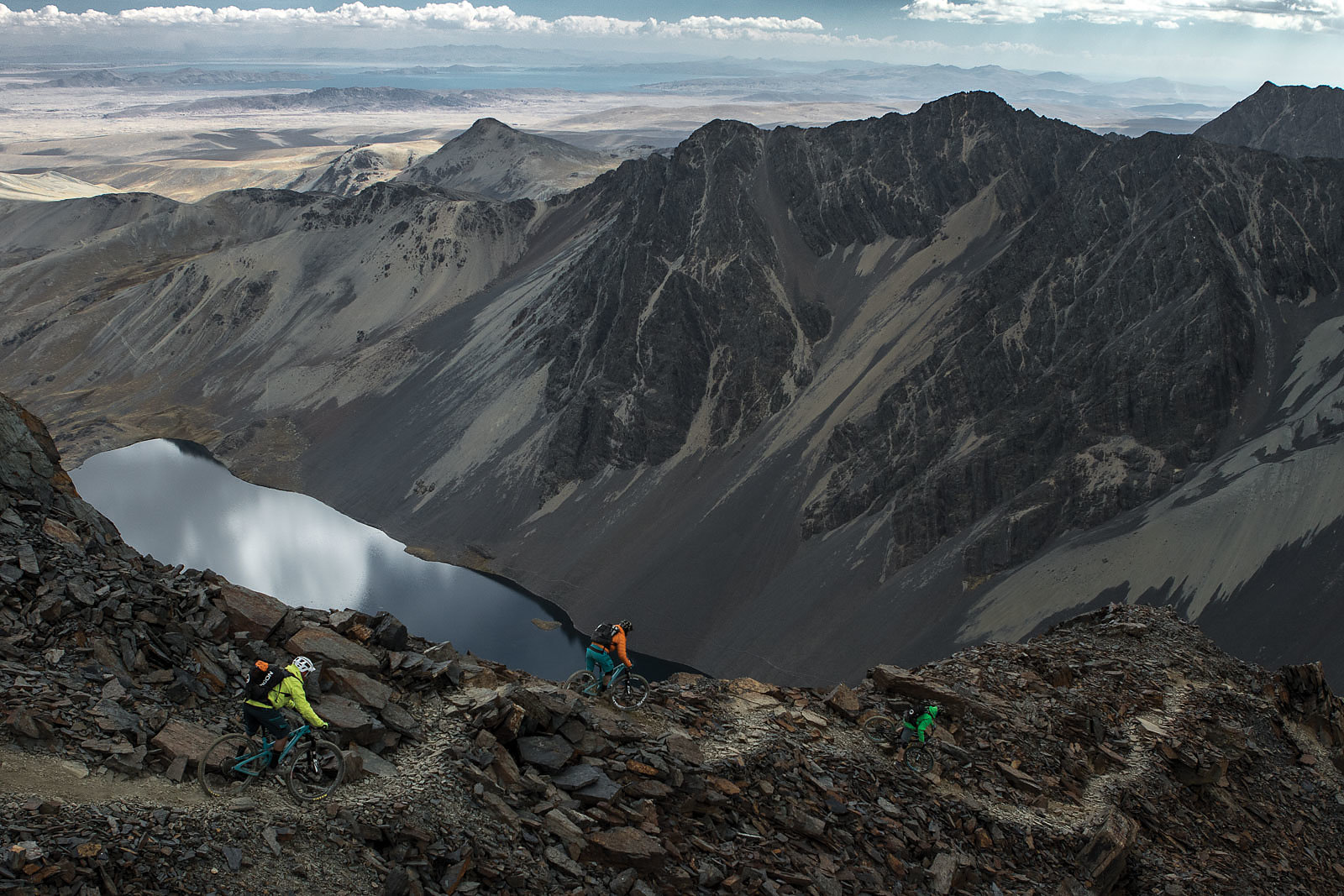
It’s at the end of an all-day gravel grind on day five that we realize we don’t have enough food. Mountain pass after mountain pass all blend together, and we have trouble remembering the date, or when we started. I sit with bags of couscous and oatmeal, counting out rations. We’re a day short on meals. Things are about to get slim—and hungry. Our ninth day will be powered by powdered soup for breakfast, no snacks and the hope that Manchito will have his usual larder of goodies at the pickup.
By the start of day seven, we’re eye-level with the glaciers all around us, scrambling up a steep, narrow section of trail that a guide in La Paz had said was too risky to attempt on bikes. Carston practically skips his way up at the front of the group; I’m a nervous wreck at the back, watching intensely to make sure no one slips and falls down the precipitous slope below. We hand the bikes one-by-one around an exposed corner, finally topping out on a scree path leading to the day’s allotted pass. My nerves are already shot, but we’re a long way from our objective: the 17,454-foot summit of Pico Austria, the highest elevation to which any of us have ever been on foot, much less with bikes.
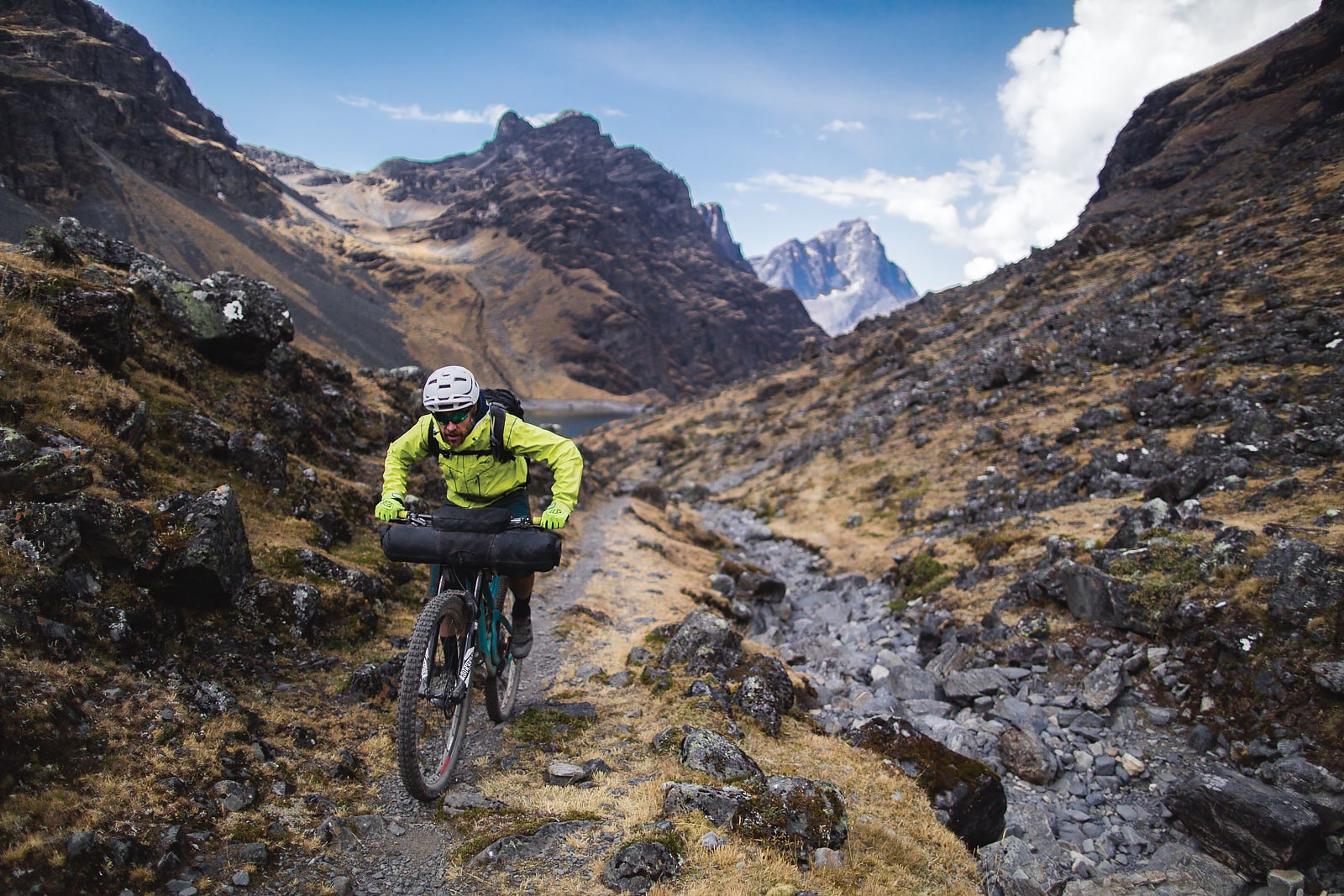
The trail continues out onto a narrow ridge, and as we look upward we see a massive condor lazily circling the peak (our only condor sighting of the trip). A vast alpine plain stretches out toward the deep blue waters of Lake Titicaca, which straddles the border between Bolivia and Peru and which, at 12,507 feet above sea level, is the world’s highest navigable lake. All I can think about, however, are the lake’s huge flocks of resident flamingos that I’d seen in high school science class videos.
Stranger than the lake (flamingos not included) are the groups of guided hikers on the peak. After a week of being alone in the mountains or pedaling through villages of a few-dozen people, the bright gear of the hikers feels out of place. It also reminds us of the comforts—and meals—that await us ahead, and we swoop down the 2,500-foot descent with thoughts of juice, bread and cheese, and car-assisted shuttles.
That level of luxury is still two days out, but the concrete hut we rent in the valley below is a welcome precursor. We sit around under a single buzzing light bulb, mixing boiling water, Skratch drink powder and coca leaves to pass the time—and fill our growling bellies—before falling asleep on the straw bales littered across the filthy floor. The passes behind us are catching up, and we still have two ahead.
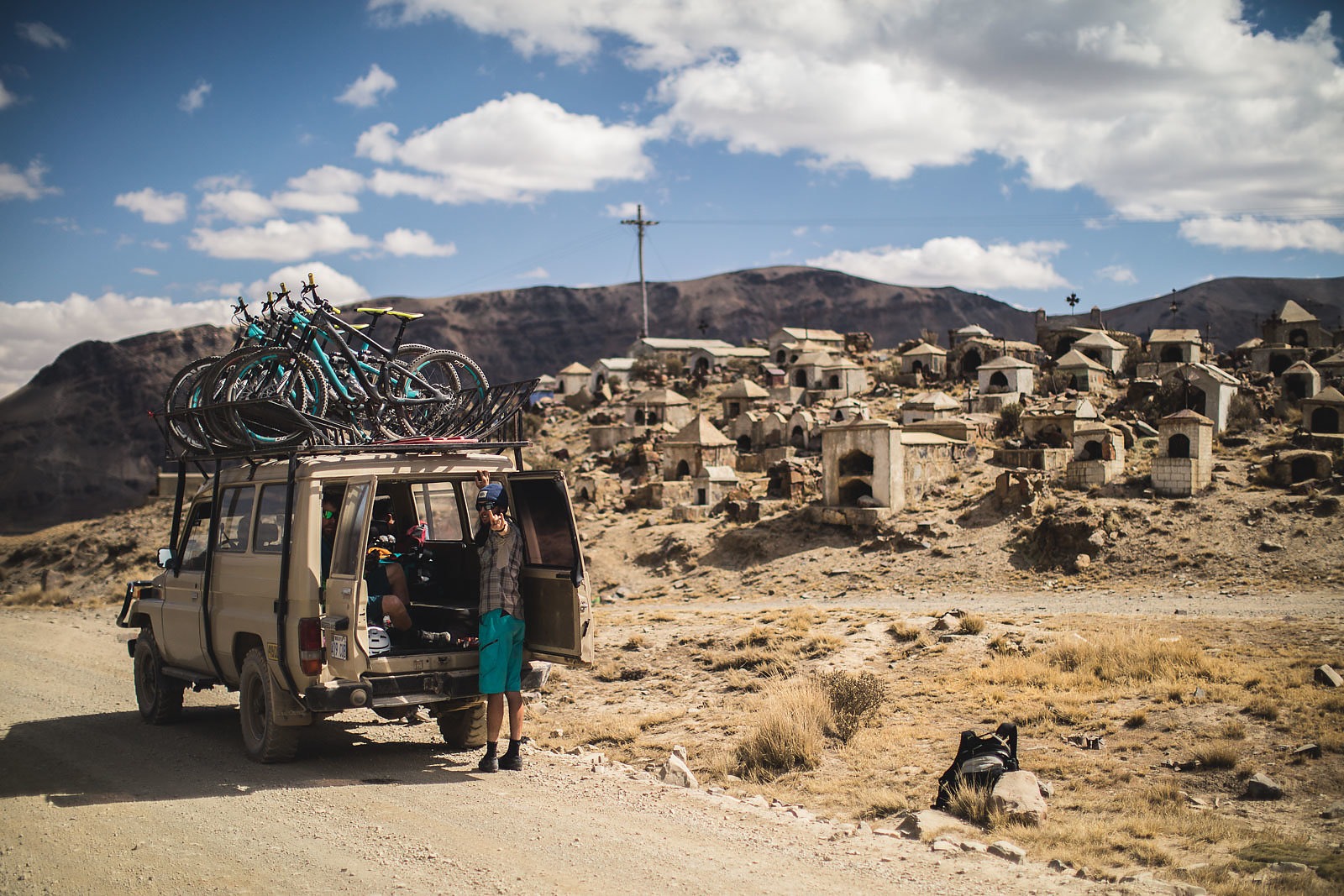
I’m always amazed how anticipation of future enjoyment can smother the miseries of the moment, and so after finishing our last pass of the trip, even our lunch of oatmeal tastes delicious. Our spirits soar with a sense of accomplishment—and survival. We are hungry and have miles to go, but our pace relaxes and we pedal through the sunset, enjoying every moment in the stunning mountains around us. The anticipation of the upcoming comforts of city life blend with memories of the week before, blunting the misery with nostalgia and the satisfaction that our ambitions haven’t been in vain.
As the sun dips below the jagged horizon, we sprawl out in the grass for a long evening nap, dreading the hunger pains to come, but comforted by the knowledge that tomorrow we’ll be greeted by Manchito, his poncho surely filled with avocados, bread and—we all hope—a bucket of cold beer.


